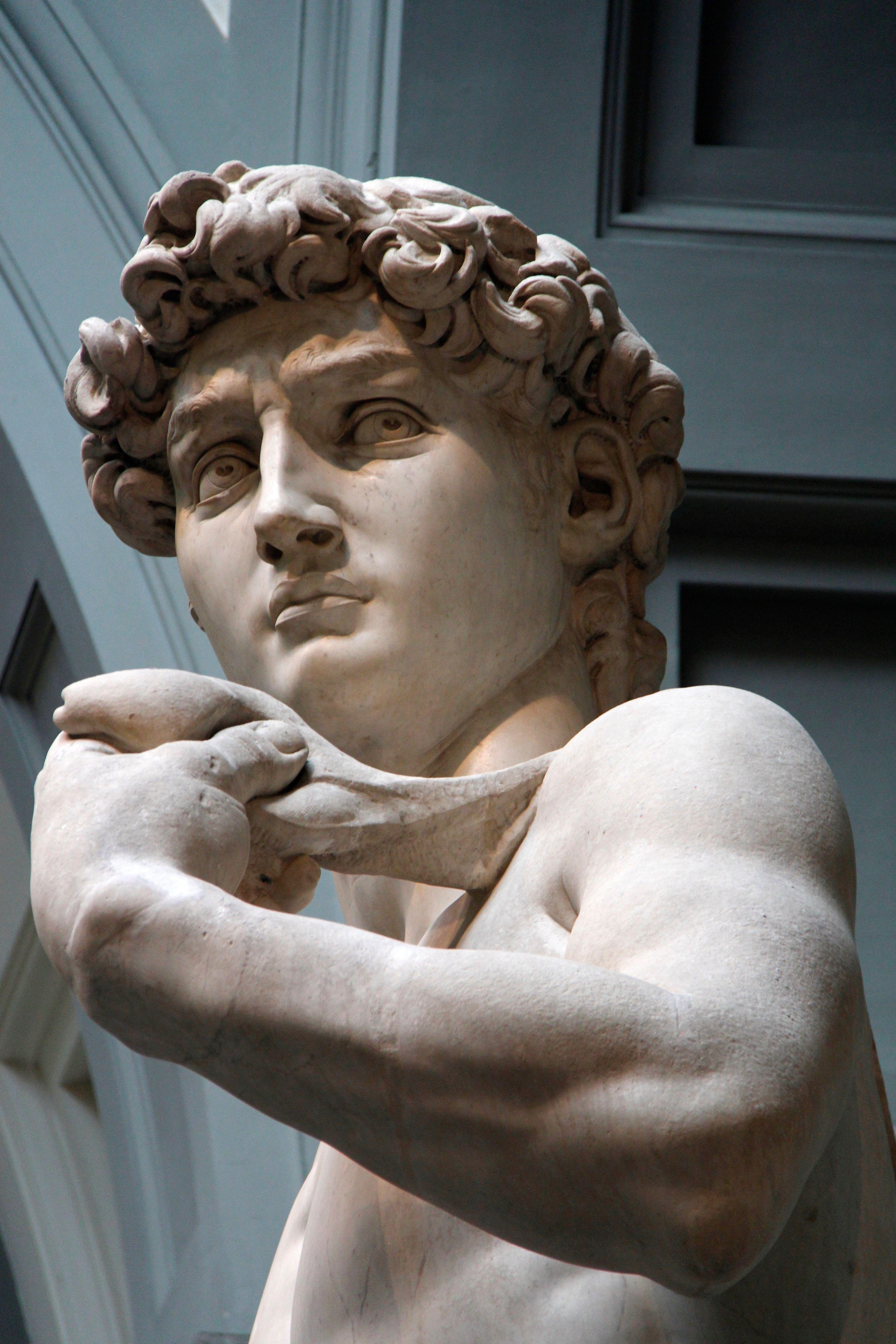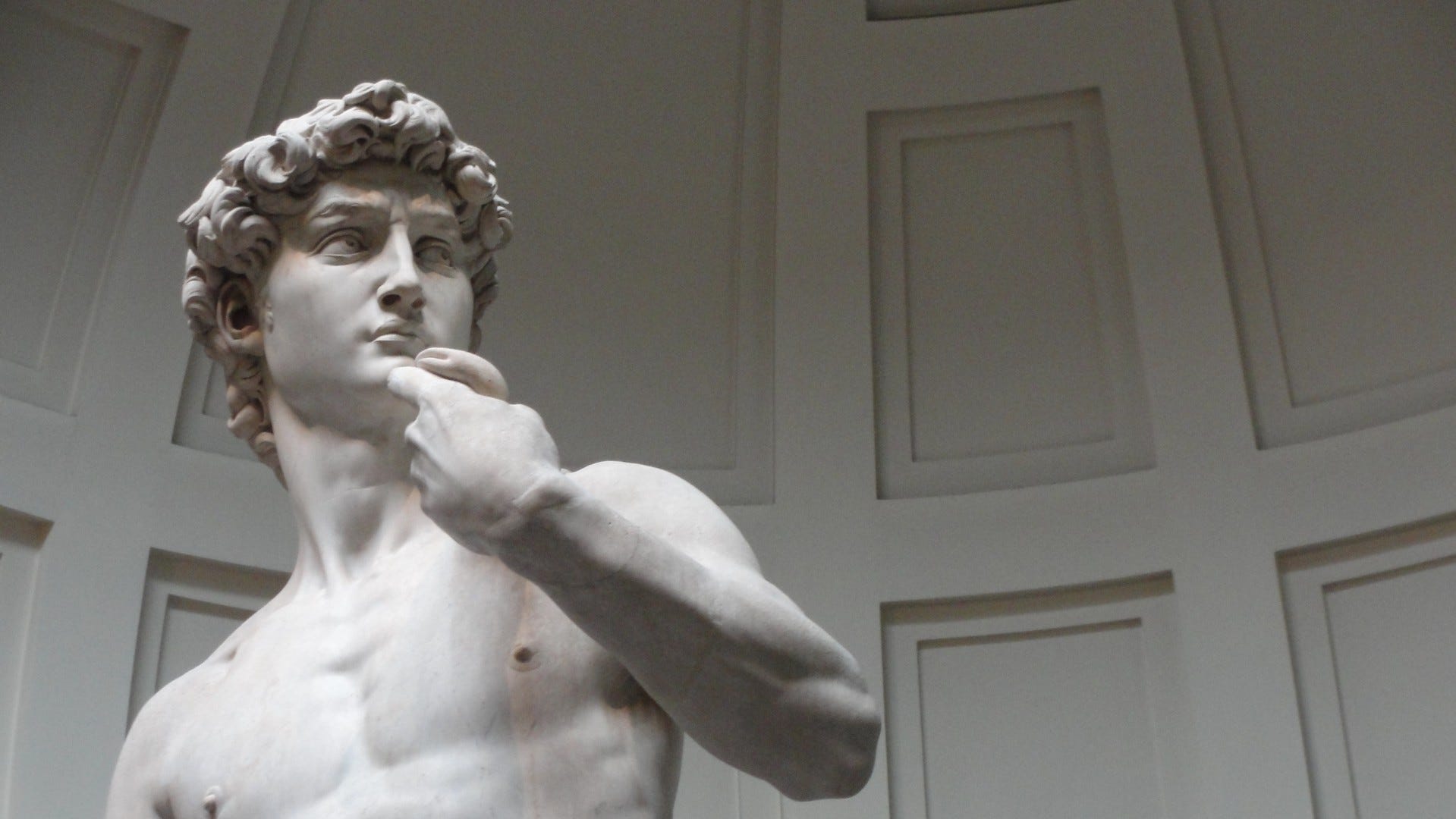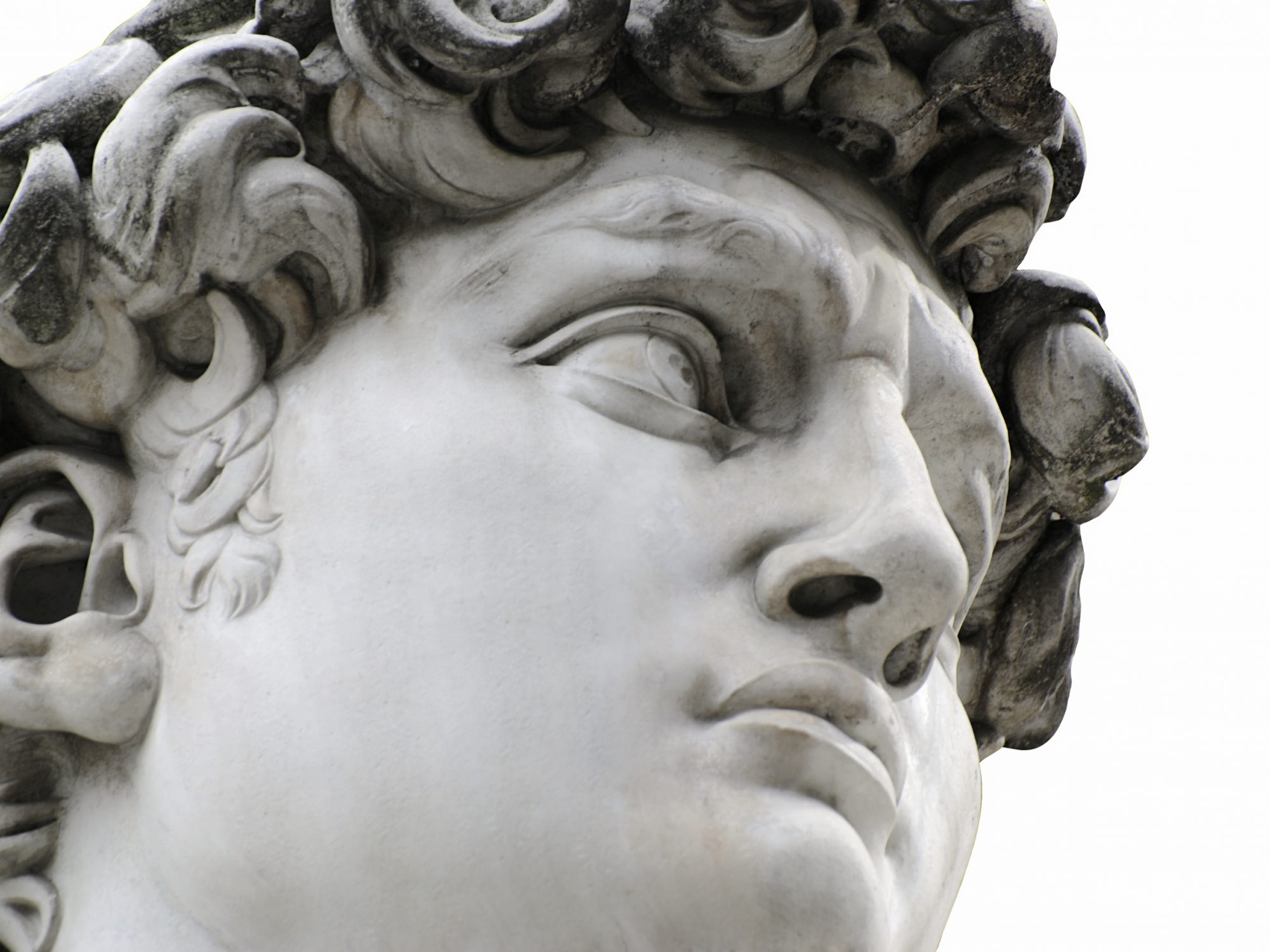**David Bowie, a name synonymous with musical innovation and theatrical performance, was a true polymath whose creative genius extended far beyond the stage. While his iconic songs and chameleon-like personas captivated millions, a lesser-known facet of his artistry was his profound talent as a painter. Among his most compelling works are the striking portraits of his long-time friend and collaborator, Iggy Pop, offering a unique glimpse into their intertwined lives and creative synergy.** This article delves into the fascinating world of David Bowie's visual art, particularly his poignant depictions of Iggy Pop, exploring the influences, contexts, and enduring legacy of these remarkable pieces. From the vibrant stages of rock and roll to the quiet solitude of his studio, Bowie approached every creative endeavor with an intense intellectual curiosity and a deep commitment to expression. His paintings, especially those featuring James Osterberg, famously known as Iggy Pop, are not merely artistic exercises but visual narratives that reflect a complex relationship forged in the crucible of shared ambition, artistic exploration, and personal struggles. Join us as we celebrate this extraordinary dimension of Bowie's legacy, paying tribute to the artist behind the music.
Beyond the Stardust: David Bowie, The Painter
Most people know David Bowie as a pop star, a performer, and a musical innovator who constantly reinvented himself and the landscape of popular music. However, did you know he had a secret talent, a profound passion for fine arts that he pursued with dedication and knowledge? Bowie's artistic endeavors weren't limited to the sonic and performative; he was also a prolific painter, creating works that were as intriguing, powerful, and expressive as his music. His paintings offer a mysterious touch to his great legacy, revealing another layer of his complex creative mind.
A Lifelong Fascination with Art
David Bowie’s paintings show a knowledgeable approach to art, influenced by a pantheon of significant figures in the art world. He drew inspiration from the raw, emotive power of artists like Frank Auerbach, David Bomberg, Francis Bacon, and Francis Picabia. His work also clearly bore the hallmarks of German Expressionism, a movement known for its intense emotional expression and often distorted reality. This deep engagement with art history and theory was not a casual hobby but a serious pursuit that informed his worldview and, in turn, his music. He collected art voraciously and was known for his insightful commentary on various artistic movements and individual artists. This intellectual curiosity and commitment to visual art were integral to his identity as a comprehensive artist, proving that his creativity knew no bounds.
The Unbreakable Bond: David Bowie and Iggy Pop's Shared History
The relationship between David Bowie and Iggy Pop is one of the most legendary and influential in rock history. They met in the early 1970s, a pivotal period for both artists. Their collaboration began in earnest when Bowie went on to produce The Stooges’ 1973 LP, *Raw Power*, an album that, despite its initial commercial struggles, became a foundational text for punk rock and beyond. This collaboration marked the beginning of a close relationship, one charged with intense creativity, fame, and unfortunately, significant drug problems that continued for years. Their bond deepened considerably in the spring of 1976 when both artists, seeking a new environment and a break from the excesses of Los Angeles, left America and moved to West Berlin. Living together, they embarked on a period of intense collaboration, producing some of their most seminal works. It was during this "Berlin Trilogy" era for Bowie, and the creation of Iggy Pop's debut solo studio album *The Idiot* (released March 18, 1977, and produced by Bowie, primarily recorded at Château d'Hérouville in France), that their artistic and personal lives became inextricably linked. Their shared experiences, from creative breakthroughs to battles with addiction (heroin for Iggy Pop, cocaine for Bowie, which had negatively affected their lives by 1974), forged an unbreakable bond. When David Bowie died on January 10, 2016, Iggy Pop confessed to *The New York Times* that Bowie had "resurrected him," a testament to the profound impact Bowie had on his life and career. This deep personal connection undoubtedly fueled the emotional depth seen in Bowie's portraits of Iggy Pop.
The Canvas as a Confidant: Bowie's Portraits of Iggy Pop
Among David Bowie's most celebrated paintings are his portraits of Iggy Pop. These works are not just likenesses; they are intimate studies of a complex individual and a profound friendship. Bowie created several portraits of Iggy Pop, notably two significant ones from their time in Berlin: one from 1976 and another from 1978. These powerful pieces are now held in the collection of the Groninger Museum in the Netherlands, a testament to their artistic and historical significance. One of the most famous of these is "Portrait of J.O.," which refers to James Osterberg, the real name of Iggy Pop. This particular painting, created in 1976, captures the raw energy and vulnerability of Iggy Pop during a transformative period in his life and career. Bowie's approach to these portraits was deeply personal, reflecting his keen observational skills and his understanding of Pop's inner world. The "Portrait of J.O." (Iggy Pop) is more than just a depiction; it's a window into the soul of a friend, rendered with a knowledgeable artistic hand influenced by the expressive and often dark tones of the artists Bowie admired. The intensity and depth of these paintings underscore the unique dynamic between the two artists, where creative collaboration bled into profound personal connection.
Exhibiting the Unseen: Bowie's Art in the Public Eye
While David Bowie's musical and performative genius was always on public display, his fine art was often a more private affair. However, there were moments when his paintings, including his iconic "Portrait of J.O." of Iggy Pop, stepped into the limelight, offering the public a rare glimpse into this hidden talent. One such notable occasion was on November 27, 1990, when David Bowie was photographed by Ron Galella with his painting “Portrait of J.O.” at the Eduard Nakhamkin Fine Arts Gallery in New York City. This public display was significant, as it highlighted Bowie's dual identity as both a global music icon and a serious visual artist. The photograph itself, capturing Bowie alongside his creation, became an iconic image, further solidifying his status as a multidisciplinary artist. It allowed fans and critics alike to appreciate the depth of his artistic expression beyond the familiar melodies and stage theatrics. The fact that he chose to exhibit a portrait of Iggy Pop underscores the importance of their relationship not just personally, but also as a profound source of inspiration for Bowie's visual art. This event served as a powerful reminder that Bowie's creativity was boundless, flowing seamlessly between different mediums.
The Digital Phenomenon: Bowie, Pop, and the Viral Meme
Beyond their direct artistic collaborations and Bowie's paintings, the enduring cultural impact of David Bowie and Iggy Pop has manifested in unexpected ways, particularly in the digital age. One striking example is a viral internet phenomenon involving an image of Dean Martin and Jerry Lewis, two legends of American comedy, which was modified to feature the faces of David Bowie and Iggy Pop. This photo, with Bowie and Pop's faces seamlessly superimposed, became a true internet sensation. It was shared millions of times across social media platforms, achieving a level of ubiquity that transcended fan circles and permeated mainstream internet culture. So widespread was its reach that it was even exhibited in art galleries, blurring the lines between digital meme culture and fine art. This image, though a fabrication, speaks volumes about the iconic status of Bowie and Pop as a duo, their images instantly recognizable and capable of evoking a shared cultural understanding, even in a humorous, anachronistic context.
Unmasking the Truth: The Origins of the Viral Image
While the viral image of Bowie and Pop as Dean Martin and Jerry Lewis is undeniably entertaining and widely circulated, it’s important to clarify its origins. As you might suspect, it's a clever digital manipulation. The head of Bowie was "stolen" from a photoshoot for his 1977 album *Heroes*, a period distinct from the original Dean Martin and Jerry Lewis photograph. Furthermore, the original photo of Iggy Pop used in the composite dates back to 1969, almost a decade before Bowie's *Heroes* photoshoot. This revelation highlights how easily images can be manipulated and how quickly misinformation can spread in the digital age. However, the fact that this particular doctored image resonated so strongly with millions and even found its way into galleries speaks to the powerful, almost mythical, duo that David Bowie and Iggy Pop represent in the collective consciousness. It's a testament to their enduring legacy and the way their personas continue to captivate and inspire, even in the realm of internet folklore.
David Bowie's Creative Universe: More Than Just Music
David Bowie's creative output was truly boundless, encompassing far more than just his groundbreaking music and his significant contributions to the world of fine art, including his evocative David Bowie Iggy Pop paintings. He was a polymath who continuously explored different artistic disciplines, leaving an indelible mark on each. Beyond the stage, he excelled in cinema, starring in films like *The Man Who Fell to Earth* and *Labyrinth*, and even ventured into video games, showcasing his versatility and willingness to experiment across various media. His intellectual curiosity was insatiable. Bowie was an avid reader, with his "top 100 books" list offering a fascinating insight into the literary influences that shaped his mind. Similarly, he compiled lists of his 25 favorite LPs in his record collection, many of which can now be streamed free online, providing a window into his musical inspirations. He meticulously crafted characters like Ziggy Stardust, a persona that not only made him famous but redefined the possibilities of pop music and performance art. The art from his final album, *Blackstar*, released just days before his passing, was made free for fans to download and reuse, a final act of artistic generosity that underscored his commitment to creative freedom and accessibility.
Bowie's Legacy: A Multidisciplinary Artist
Ultimately, David Bowie's legacy is not just that of a musician, but of a truly multidisciplinary artist. He embraced music, performing arts, and fine arts with equal passion and expertise. Whether it was a sketch of Iggy Pop, a meticulously designed album cover, a challenging film role, or a conceptual art piece, Bowie approached every project with a unique vision and a profound understanding of its medium. His ability to seamlessly transition between these forms, often blurring the lines between them, is what truly set him apart. His dabbling in painting was not a mere side hobby but an integral part of his continuous exploration of human expression, making his entire body of work a testament to the power of unbridled creativity.
The Enduring Resonance of David Bowie's Art
With the recent passing of David Bowie on January 10, 2016, many continue to mourn the loss of his musical genius. However, to truly pay tribute to him, we must celebrate the entirety of his creativity, including his significant contributions to visual art. His paintings, particularly the evocative David Bowie Iggy Pop paintings, remain a powerful testament to his artistic range and the depth of his personal connections. These works are not just historical artifacts; they are vibrant expressions that continue to resonate with viewers today.
Why His Paintings Still Captivate
Bowie's work as a painter, described as interesting, powerful, and expressive by Jonathan Stone, adds a mysterious touch to his great legacy. His ability to translate complex emotions and intellectual concepts onto canvas, influenced by masters like David Bomberg, Francis Bacon, and Francis Picabia, resulted in beautiful, often dark, and always thought-provoking pieces. The Iggy Pop portraits, in particular, capture a moment in time, a relationship, and a shared journey with an intimacy that only a close friend and fellow artist could achieve. They invite us to look beyond the public personas and delve into the private world of two cultural giants. These paintings, alongside his music, films, and written works, solidify David Bowie's status as one of the most comprehensive and influential artists of his time, whose creative spirit continues to inspire and intrigue generations.
Biographical Snapshots
David Bowie
| Category | Details |
|---|
| Full Name | David Robert Jones |
| Born | January 8, 1947, Brixton, London, England |
| Died | January 10, 2016, New York City, USA |
| Occupation | Musician, Singer-songwriter, Actor, Painter, Record Producer |
| Years Active | 1962–2016 |
| Known For | Musical innovation, visual presentation, genre-bending, iconic personas (Ziggy Stardust, Aladdin Sane, Thin White Duke) |
| Artistic Influences | Frank Auerbach, David Bomberg, Francis Bacon, Francis Picabia, German Expressionism |
Iggy Pop
| Category | Details |
|---|
| Full Name | James Newell Osterberg Jr. |
| Born | April 21, 1947, Muskegon, Michigan, USA |
| Occupation | Singer, Songwriter, Musician, Actor, Record Producer |
| Years Active | 1960s–present |
| Known For | Dynamic and unpredictable stage performances, "Godfather of Punk," influential solo work and work with The Stooges |
| Key Collaborations |


